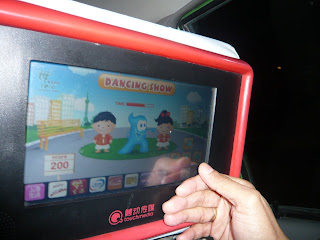In my 2 year stay here in Singapore, there are a few things that are always viable topics of discussion when I'm with different groups of Singaporean Chinese. Among all of these, my personal favorite involves a very "weird" practice unique to Singaporeans. Somehow, the way they use chopsticks is completely different to how their racial counterparts use it.
 This is basically the "normal" way of holding chopsticks; how the Chinese from China, as well as the Chinese in other countries in South East Asia (except for SIngapore and possibly Malaysia) eat using this utensil. It's how we were taught as well in the Philippines. Heck, that's even my hand in that picture! :D
This is basically the "normal" way of holding chopsticks; how the Chinese from China, as well as the Chinese in other countries in South East Asia (except for SIngapore and possibly Malaysia) eat using this utensil. It's how we were taught as well in the Philippines. Heck, that's even my hand in that picture! :DThe sticks are apart, with one resting between the thumb and the forefinger while the other is being held by the tips of the other 3 fingers (see picture). The stick nested between the thumb and the forefinger does not move. It serves as the anchor, while the other stick being held by the three fingers pushes the food to that stick and locking it in place.
(And no, that's not my hand because I don't even know how to do it. :D)
Movement of the sticks is limited due to both being nested between the thumb and forefinger. How they actually get the food involves a complex movement of 3-4 fingers and a twist of the wrist.
From what I remember, the hand actually does a "scooping" motion, mimicking that of using a spoon to get soup. Then, it's as if the whole hand cringes in order to make the chopsticks cross each other while in this scooping motion, grabbing the food. However, unlike the traditional way where people can eat directly from the chopsticks because the form allows them to do so, Singaporeans have to put the food they grabbed using their chopsticks on their Chinese spoons (what do you call those things?), then use the spoon to eat the food.
I've always been fascinated with this evolution of a once thought universal culture. Whenever I would eat in public places, I try to think about how this culture change came about. Even the very old Singaporeans hold it using their way, meaning this habit could have spawned generations ago, when a particular group of Chinese living in Malaysia and Singapore suddenly opted using this method.
What's also strange about this is that it's a topic of discussion among foreigners and Singaporeans, but no one has really written anything about it. It's definitely something worth investigating, because this rift in chopstick handling is very insightful and interesting in the study of cultural evolution. What was once thought of to be a one-way-only method of using turns out having a surprising counterpart.
It's amazing how cultures seem so similar yet so different.
I'm still grasping how to actually do it the SIngaporean way. It's a very difficult thing to do. :)
layman





















